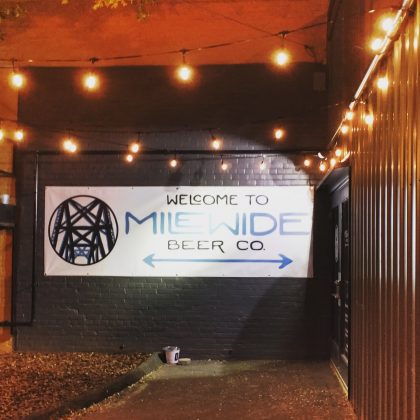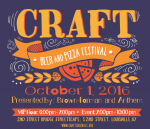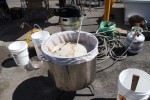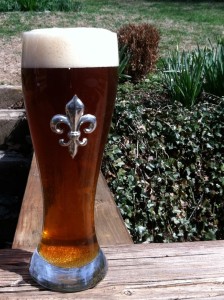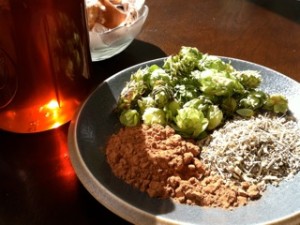Kentucky has some great local honey. With all the flowers, fruits, trees, berries and relatively mild weather, bees have a holiday and provide some really rich flavors for putting on bread, cooking and yes, of course, beer.
I have a bee guy in eastern Kentucky. The sourwood trees and berries growing in that part of the country produce a complex flavor that is not as sweet as most honeys. He also works hard to avoid pesticides and other chemicals that can affect the health of his bees and taste of the honey. In any form it is fabulous. In beer, it’s even better.
I have brewed two very different beers from the same source at the upper end of Daniel Boone National Forest, or for all you hippies, just north of Red River Gorge. For spring, I used an extremely light honey to flavor summer ale. In late fall, a dark honey brought a deep amber to life.
Over the long winter, I had about IPAed and Stouted myself into drinking wine. Winter needed to be over and I wanted a beer that would make summer hurry up and get here. I needed an adult beverage to drink on the deck as soon as Daffodils appeared. I could feel summer coming. Now I wanted to taste it.
I am not generally a wheat beer drinker, but was willing to experiment to lighten up one of the ales I typically brew.
I upped the wheat ratio in my grain mix to about 2/5ths. Picked Czech Saaz as flavoring hops for a clean taste. Figured a little orange peel would keep the nose high and alive. The honey was somewhat of an afterthought as I smelled the wort and looked at the mason jar of honey. Seemed like a natural, and in it went. Addition of a standard ale yeast, and we were making beer.
The result was Buttercup Ale. A light wheat flavored ale with a touch of natural honey and orange to catch the summer sunshine and morning dew. Smooth refreshing and not too sweet.
The second honey brew was more planned around the nectar. This honey is taken from the bottom of the hive late in the year. It is literally what falls to the bottom and ages over the summer. It is dark amber and you can taste the tang of sourwood and sweetness of wild berries that give the honey its more complex, rich flavor than commercial clover honey.
The wife has been enjoying a range of chocolaty stouts, so I was aiming for something she would enjoy without getting too much of a sweet desert beer.
Started by adding a little Chocolate Rye and Caramunich to the basic grain mix. A dash of cocoa and pinch of wormwood complemented the two full cups of honey for flavoring. A healthy ounce of homegrown Cascade Hops finished the brew.
The final product, Cocoa Bee Ale, is complex, dark amber that was consumed at an alarmingly rapid rate. Don’t worry, I have more honey and I am not going to waste it on biscuits.
This world and those wonderful little bees give us all kinds of flavors to mix, match and mash. With a little time and some thinking with your nose, you can make subtle modifications to some of your old faithful recipes or create something totally new. Honey, it’s not just for breakfast.

